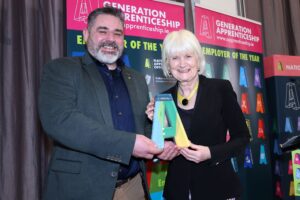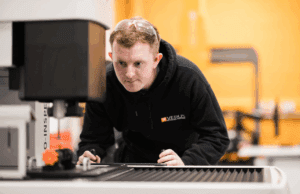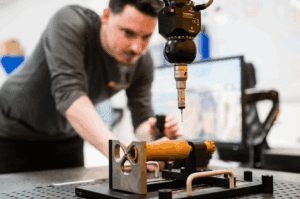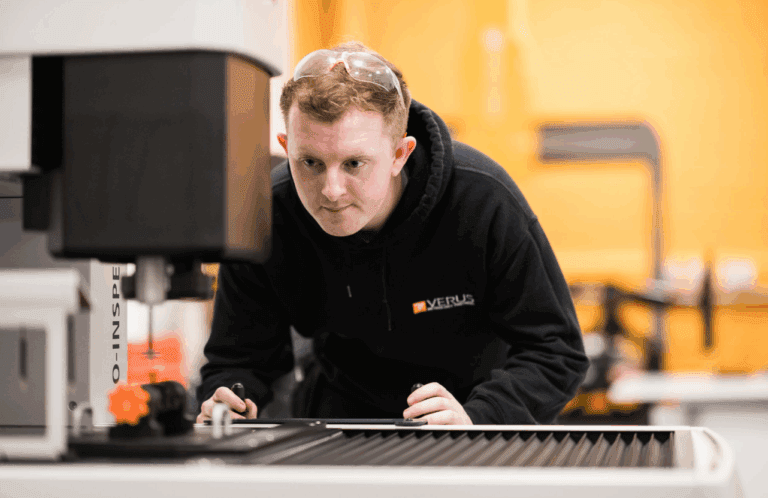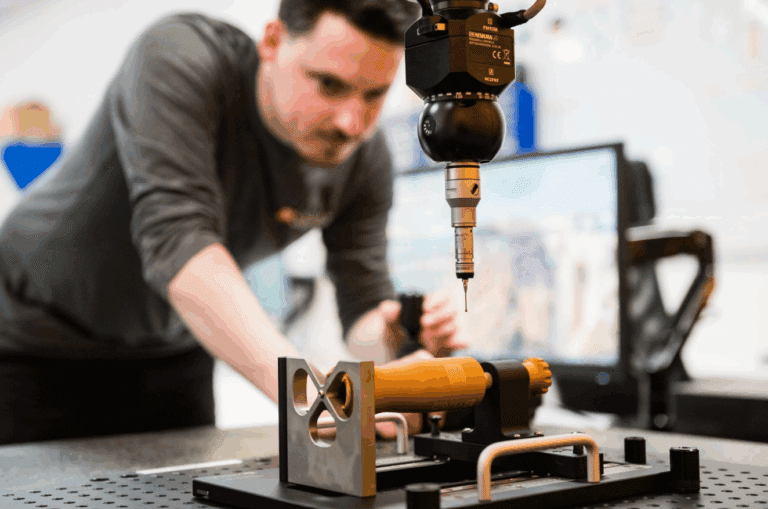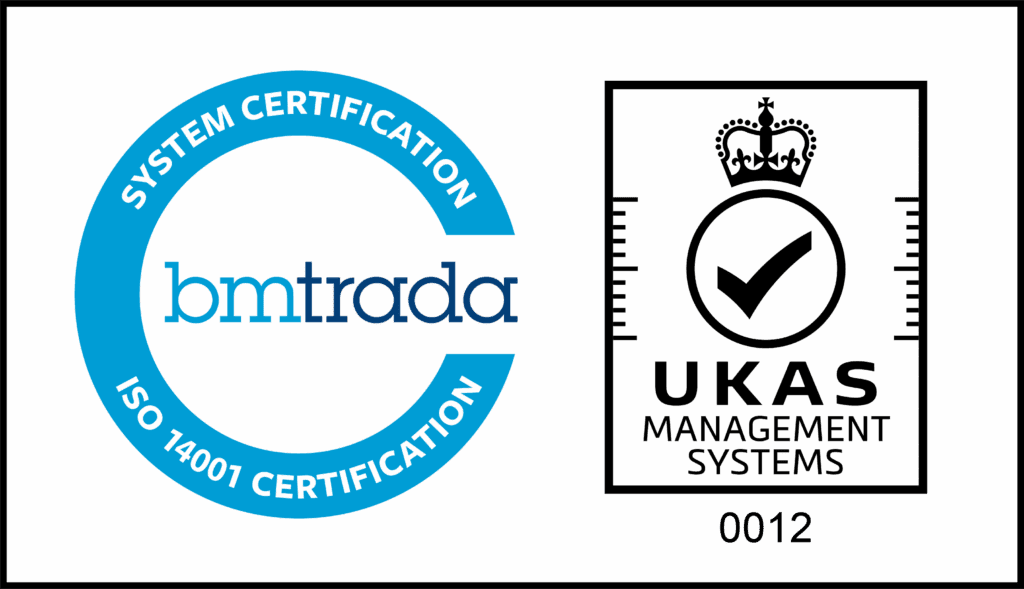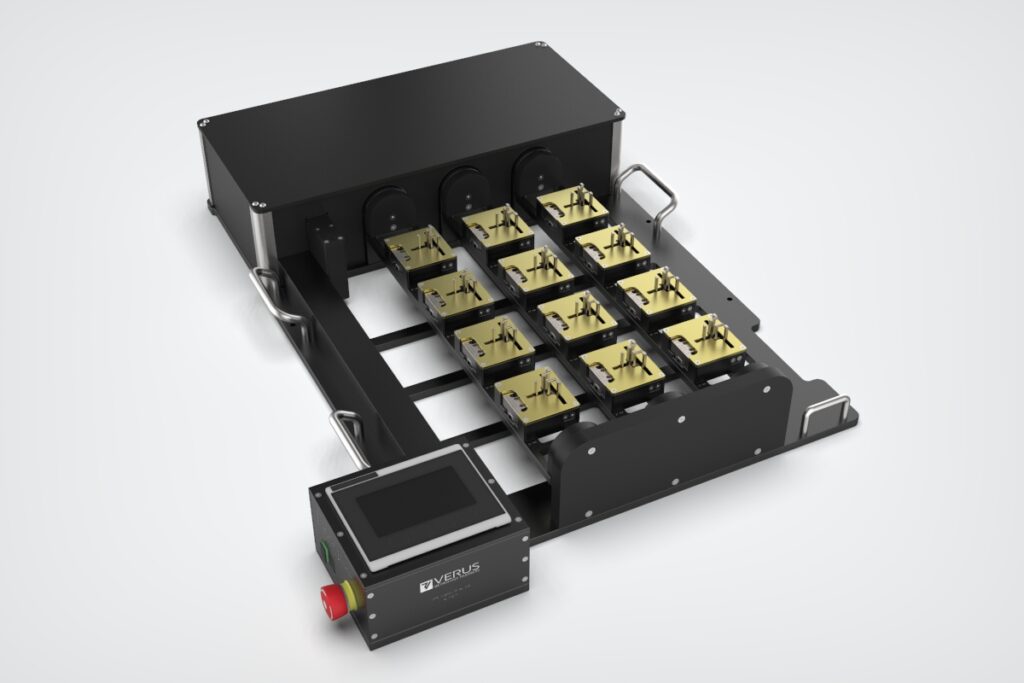
Verus Metrology Partners have pioneered an ever-evolving business model in response to both the current and future needs of clients since the founding of the company in 2008.
Partnering with global clients has directed this evolution and allowed Verus to support a culture of continuous innovation. This is evident in the shift of the business from solely a sub-contract metrology business to a complete turnkey metrology solutions provider.
“Thinking about the future and addressing matters that are important to our clients, such as Just-in-time (JIT) delivery, higher return on investment and closed-loop inspection, is core to everything we do,” says Technical Director Michael Nugent. “Planning is preparing for the future, in the present,” Michael adds.
Reacting to these needs as well as aligning with the fourth age of the industrial revolution, Verus is looking towards the realms of human and robot collaboration. Advancing the current capabilities of our fixtures through automation and replacing mechanical loading with automated loading and unloading will not only allow Metrology Engineers to create fully autonomous standalone inspection cells, namely eliminating non-value-added activities but will also align inspection and metrology to the Principles of Lean.
To become a factory of the future and work towards a closed system, fully autonomous stand-alone inspection cells can be achieved through Verus metrology Partners’ two-stage process; robotic loading stations and automated fixtures.
Robotic loading Stations
For example, utilizing an existing 6-axis robot on a molding machine, the scheduled shots for inspection will be directed to a metrology conveyor which will be organised into pre-orientated transfer trays to line up with cavitation. These trays will go into storage for a minimum of 24 hours.
A second robot, integrated into the inspection cell, will pick up the components and load them into the automated fixtures. The fixtures will transfer to the inspection stage and metrology is then completed. The robot will then unload the fixture and place them back onto the trays for storage. This dimensional information can be used to adjust the machine process to reduce process variation (float) in addition, this data can be used to predict mold tooling wear and initiate preventative maintenance, thus closing the system loop.
Robotic loading and unloading allows the metrology engineers to focus on inspection systems that are designed specifically for the components and their identified critical dimensions, consequently reducing waste, minimizing scrap and eliminating over specification of metrology inspection machines. Combining human and robot capabilities on assembly and sub assembly lines results in quicker in-coming inspection and batch release times and a quicker return on investment.
Automated Fixtures
The human variable in a validation process is further reduced through the second stage of the process; automated fixtures.
The development of Verus’ self-motivated Fixtures are classified into three different categories to highlight the transition and importance of replacing non- value add activities with added value. Verus is paving the way for the future of production quality inspections using the following fixtures classifications;
1. Static Station fixture- Static Metrology Inspection Fixture
2. Dynamic Fixture- Dynamic Automated Inspection Fixture
3. V-Bot Fixture- Robotic Dynamic Automated Inspection Fixture
“Auto Rotation & Robotic Loading and Unloading, integrated into a dedicated cell, is the future of production quality inspection,” says Managing Director Andrew Hodson.
To find out more about the services we provide, contact Michael Nugent, our Technical Director, on +353 83 342 2920 (ext. 215).
